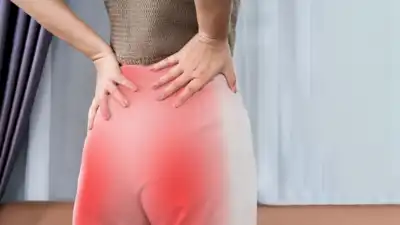You may get away with ignoring a slipped disc and using temporary fixes like heat packs or painkillers but over time it can lead to serious conditions like Sciatica or Spinal Stenosis. Sciatica produces stabbing nerve pain from the lower back to the leg, and spinal stenosis constricts the spinal canal and compresses nerves often in the lower back or neck. Both are often overlooked but can cause chronic pain, walking difficulties and even bladder issues if left untreated.
Other causes of Sciatica and Spinal Stenosis (besides herniated/slip disc) and its common symptoms can be:
Most common in persons between the ages of 30 and 50, sciatica is frequently brought on by sedentary lifestyles, obesity, pregnancy, bone spurs, muscle spasms, and physically demanding jobs. Although congenital problems or previous spine traumas can also cause spinal stenosis, which can occasionally result in neurogenic claudication, it usually affects people over 50 owing to age-related changes like arthritis. These disorders, which can produce symptoms including leg discomfort, numbness, weakness, back pain, and in extreme cases, loss of bowel or bladder control, are associated with aging, bad posture, spinal stress, and heredity.
Ways to treat your spinal disorder
When conservative measures like rest, medication, or physiotherapy fail to relieve symptoms, surgery may be necessary. A modern option that’s gaining traction is robotic-assisted spine surgery, which enhances the surgeon’s precision during procedures. While it doesn’t replace the expertise of a skilled surgeon, it does enable smaller incisions, accurate implant placement, and reduced complication risk, which together promote faster recovery and better outcomes.
Mohammed Salim Al Dowaiki from Oman and Aziza Adadi Rajabu from Tanzania both sought treatment for crippling spinal disorders that had significantly affected their life when they came to Manipal Hospital Old Airport Road in Bengaluru.
For more than two years, Aziza, a 63-year-old mother of five and retired banker, had been dealing with persistent leg and low lower back problems that made even short walks uncomfortable. Mohammed, 37, was an active person whose life abruptly changed when he developed significant leg pain, urinary problems, and muscle weakness as a result of a spinal ailment that was getting worse.
As both the patients underwent robotic-assisted spinal surgeries where, Aziza was diagnosed with spondylolisthesis and spinal canal stenosis, while Mohammed faced a severe disc herniation leading to compressed nerve roots at the lower end of the spinal cord. In both cases, circumferential decompression and robotic arm-assisted spinal fusion procedures were performed to relieve nerve compression and stabilize the spine. The surgical approach involved using implants like screws and rods to support the affected area and correct abnormal movement.
